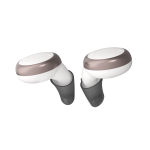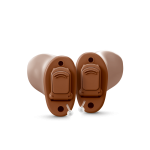The Fascinating Journey of Sound: How We Hear?

The Fascinating Journey of Sound: How We Hear?
Hearing is one of our most vital senses, enabling us to
connect with the world through the symphony of sounds that surround us. But
have you ever wondered about the intricate process that allows us to perceive
sounds, from the gentle rustle of leaves to the melodic notes of a songbird? In
this exploration, we delve into the remarkable journey of sound through the
auditory system, from the moment sound waves touch our ears to the instant our
brain transforms them into meaningful sensations.
The Anatomy of Hearing:
Our auditory system comprises a complex network of
structures that work in harmony to convert sound waves into the electrical
signals that our brain comprehends. Let's examine this complex procedure in
more detail:
1. Sound Waves Enter the Ear:
The journey of sound begins as external sound waves travel
through the air and enter our outer ear. The outer ear includes the visible
part of our ear, known as the pinna, and the ear canal, a narrow passageway
leading to the eardrum.
2. Vibrations Reach the Eardrum:
Sound waves travel to the eardrum and cause it to vibrate.
Think of the eardrum as nature's microphone; it captures the incoming sound
vibrations and sets the auditory process into motion.
3. The Middle Ear's Three Tiny Bones:
The vibrations from the eardrum are then transmitted to a
trio of minuscule bones nestled within the middle ear. These three bones, known
as the malleus, incus, and stapes (or hammer, anvil, and stirrup), form a
bridge that connects the eardrum to the inner ear.
4. Transformation in the Inner Ear:
The inner ear, often likened to a snail's shell, is a
delicate and remarkable structure known as the cochlea. This fluid-filled coil
plays a pivotal role in converting sound vibrations into electrical signals.
The Cochlear Partition: Within the cochlea, an elastic partition known as the basilar membrane divides it into upper and lower portions. The basilar membrane serves as the foundation for crucial hearing structures.

5. The Role of Hair Cells:
Embedded within the cochlea are sensory cells called hair
cells. These remarkable cells are perched atop the basilar membrane and play a
pivotal role in translating the vibrations into electrical signals.
Stereocilia: These hair cells possess hair-like projections
known as stereocilia. As the traveling wave moves along the basilar membrane,
it causes the hair cells and their stereocilia to sway in harmony.
6. The Birth of an Electrical Signal:
The mesmerizing dance of the hair cells and their
stereocilia leads to a fascinating phenomenon. As stereocilia bend, they
stimulate pore-like channels located at their tips to open. This event allows
chemicals to rush into the cells, sparking an electrical signal.
7. The Auditory Nerve's Mission:
With an electrical signal now generated, the auditory nerve
springs into action. This nerve carries the electrical signal to the brain,
acting as a dedicated messenger of sound.
8. The Brain's Interpretation:
Finally, the brain receives the electrical signal from the
auditory nerve and undertakes a magical transformation. It turns this
electrical code into a sound that we recognize, understand, and experience.
The process of hearing is a marvel of biology and
engineering, an intricate dance of physics and biology that occurs in an
instant. From the moment sound waves touch our ears to the instant our brain
transforms them into meaningful sensations, our auditory system works
tirelessly to connect us with the world of sound.
Understanding this journey not only deepens our appreciation
for the sense of hearing but also underscores the importance of protecting and
preserving it. So the next time you listen to your favorite music or savor the
sounds of nature, take a moment to marvel at the incredible voyage of sound
that unfolds within you. To book an appointment for a FREE Hearing Test, call us on 96 5839 5839.



















Leave a Comment